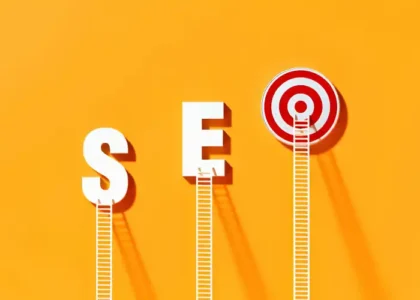Search Engine Optimization (SEO) continues to be an essential part of digital marketing, with On-Page SEO acting as the backbone of these strategies. As we venture into 2024, the way we approach SEO is becoming more complex, with numerous innovations, updates, and changes to search engine algorithms.
In this comprehensive guide, we’ll dive into everything you need to know about On-Page SEO in 2024, including the latest trends, techniques, tools, and more. Whether you’re a seasoned expert or just getting started, this guide will provide the insights you need.
- Understanding On-Page SEO
- Definition
- Importance
- Essential On-Page SEO Elements
- Title Tags
- Meta Descriptions
- Headers (H1, H2, etc.)
- Image Alt Attributes
- URL Structure
- Mobile Optimization
- Content Is Still King
- Quality Over Quantity
- Keyword Optimization
- Multimedia Integration
- User Experience (UE)
- Site Speed
- Navigation
- Core Web Vitals
- Largest Contentful Paint (LCP): Measures how long it takes for the main content of a page to load. Aiming for an LCP of 2.5 seconds or less ensures that users can engage with your page quickly.
- First Input Delay (FID): Assesses the time it takes for a page to become interactive. An FID of less than 100 milliseconds provides a responsive, satisfying experience.
- Cumulative Layout Shift (CLS):Quantifies how often users experience unexpected layout shifts. A low CLS score (less than 0.1) guarantees a stable visual experience, without distracting shifts.
- Structured Data and Schema Markup
- Voice Search Optimization
- Tools and Analytics
- Google Analytics: Offers a comprehensive view of your website’s performance, user behavior, and conversion paths.
- SEMrush: A powerful tool for keyword research, competitor analysis, and overall SEO audit.
- Moz: Known for its domain authority score, Moz offers insights into backlinks, on-page optimization, and more.
- SE Ranking: SE Ranking is well-known for its on-page optimization, but it also provides information on backlinks, domain authority score, and other topics.
- Ahrefs: Excellent for tracking backlinks, analyzing keywords, and exploring what content performs best in your niche.
On-Page SEO refers to all the measures taken within a website to improve its position in search rankings. It involves optimizing the content, meta tags, internal linking, and more.
In a world flooded with content, standing out in search engine results is more vital than ever. On-Page SEO ensures that your website is search-engine-friendly and user-focused.
The title tag, typically 60 characters long, must be concise, relevant, and incorporate the main keyword. In 2024, search engines like Google, Bing, and Yahoo pay special attention to titles that directly answer user queries. This change is reflective of the drive towards user-centric content, so making your titles descriptive and aligned with what people are searching for can enhance visibility.
While meta descriptions are not a direct ranking factor, a well-crafted meta description that’s approximately 150-160 characters long can significantly increase click-through rates. Make it engaging by including a call-to-action and relevant keywords to provide a concise summary of what the webpage contains.
Headers, including H1, H2, H3, etc., should be used to structure your content logically. By dividing your content into sections, you make it easier for search engines to understand the hierarchy of your information. H1 usually contains the main topic of the page, while the subsequent headers break down the content into digestible parts.
As visual searches become more prevalent in 2024, alt text for images will become more crucial. This descriptive text helps search engines understand the content of an image, improving accessibility for visually impaired user, and contributing to better rankings in image search results. Alt attributes should describe the image accurately and may include relevant keywords if applicable.
URLs should be user-friendly, descriptive, and free from unnecessary characters or words. Incorporate the main keywords, but avoid stuffing, and keep them as concise as possible. A clear URL structure helps both search engines and users understand what the page is about, contributing to a better user experience and SEO performance.
With Google’s shift to mobile-first indexing, it’s essential that your site is responsive and offers a seamless experience on various mobile devices, including smartphones and tablets. Mobile optimization entails adjusting site design, structure, and functionalities so that visitors using mobile devices have an experience similar to those on desktops. This includes ensuring that images are properly sized, buttons are easily clickable, and navigation is smooth, all of which are crucial for ranking well in 2024’s search landscape.
In the ever-changing landscape of SEO, one thing remains constant: the emphasis on quality content. Content should not only be informative and well-researched but also original and free from plagiarism. In 2024, search engines are even more adept at recognizing and penalizing duplicate content. Engagement and value for the reader are paramount, so focusing on providing unique insights, expert opinions, and actionable takeaways can set your content apart. Utilizing a voice that resonates with your target audience, along with factual accuracy, adds credibility and builds trust.
Keyword optimization remains a vital component of an SEO strategy. Tools like Google’s Keyword Planner, SEMrush, or Ahrefs can help you identify relevant keywords, including long-tail phrases and semantic variations that resonate with your audience. However, the era of keyword stuffing is long gone. In 2024, the focus is on natural integration of keywords, ensuring that they fit seamlessly into the content without disrupting readability.
With users demanding more engaging and interactive experiences, multimedia integration has become essential. Engaging your readers with high-quality images, videos, infographics, podcasts, or even interactive quizzes adds a dynamic layer to your content. In 2024, this approach not only caters to various learning styles but also increases time spent on your page, a signal to search engines that your content is valuable. Whether it’s a step-by-step video tutorial or an eye-catching infographic summarizing key points, multimedia elements should be optimized for both desktop and mobile and aligned with the overall content’s theme.
Site speed continues to be a major ranking factor in 2024, with search engines penalizing slow-loading sites. Users typically expect a webpage to load in under 3 seconds; any delay can lead to increased bounce rates. To enhance loading time, optimize images by compressing them without losing quality, and consider using next-gen formats like WebP. Leverage browser caching to store temporary data, reducing the load time for returning visitors. Minimize code by removing unnecessary spaces, comments, or unused code, and consider utilizing Content Delivery Networks (CDNs) to distribute the load, thereby reducing latency.
Intuitive navigation is key to a satisfying user experience, helping visitors find what they need quickly and effortlessly. This involves creating a clear path through your site with well-structured menus, descriptive link texts, and a logical flow of information. Consider including breadcrumbs, allowing users to track their path from the homepage to their current location. A well-thought-out navigation structure not only enhances user satisfaction but also assists search engines in crawling and indexing your site more effectively. In 2024, focusing on mobile navigation is also vital, ensuring a seamless experience across all devices.
Google’s Core Web Vitals have become indispensable metrics in 2024, playing a significant role in rankings. These vitals provide a tangible way to measure user experience on various fronts:
Structured data and Schema markup are becoming increasingly important in 2024 as search engines continue to strive for a deeper understanding of web content. Structured data refers to information formatted in a way that search engines can easily interpret. Schema markup, a specific type of structured data, uses a particular vocabulary that search engines understand.
By implementing Schema markup, you can enhance your Search Engine Results Page (SERP) appearance with rich snippets, like ratings, images, or even cooking time for recipes. This not only increases your site’s visibility but also may lead to higher click-through rates as users find more immediate value in the snippet. Various Schema types like ‘Article,’ ‘Product,’ ‘Event,’ and ‘Local Business’ can be used based on the content you are presenting. Tools like Google’s Structured Data Markup Helper can assist you in creating and implementing this code.
Voice search has seen exponential growth with the proliferation of smart speakers and voice-activated devices. In 2024, optimizing for voice search is no longer optional but a necessity. Unlike traditional text-based queries, voice searches are often more conversational and question-oriented.
To target voice queries, content should be optimized with natural, conversational keywords and phrases that people would use in everyday speech. Creating FAQ sections, where questions are answered directly, is one effective strategy. Also, considering local voice search by including location-based keywords can be beneficial. Ensuring that your site is mobile-friendly is crucial since many voice searches happen on mobile devices.
In an ever-evolving SEO landscape, leveraging sophisticated tools and analytics is vital for tracking performance and making informed decisions. Tools like Google Analytics, SEMrush, Moz, and Ahrefs provide insights into various key performance indicators (KPIs) like traffic sources, bounce rate, conversion rate, and more.
On-Page SEO in 2024 is a multifaceted approach that requires strategic planning, in-depth understanding, and constant adaptation to the latest trends. This guide provides the foundation, but the landscape continues to evolve, making continuous learning and agility paramount.
By focusing on user experience, quality content, and leveraging the latest tools, you can position your website for success in the ever-competitive online space. The year 2024 promises to be an exciting time for On-Page SEO. Adapt, innovate, and lead the way!





